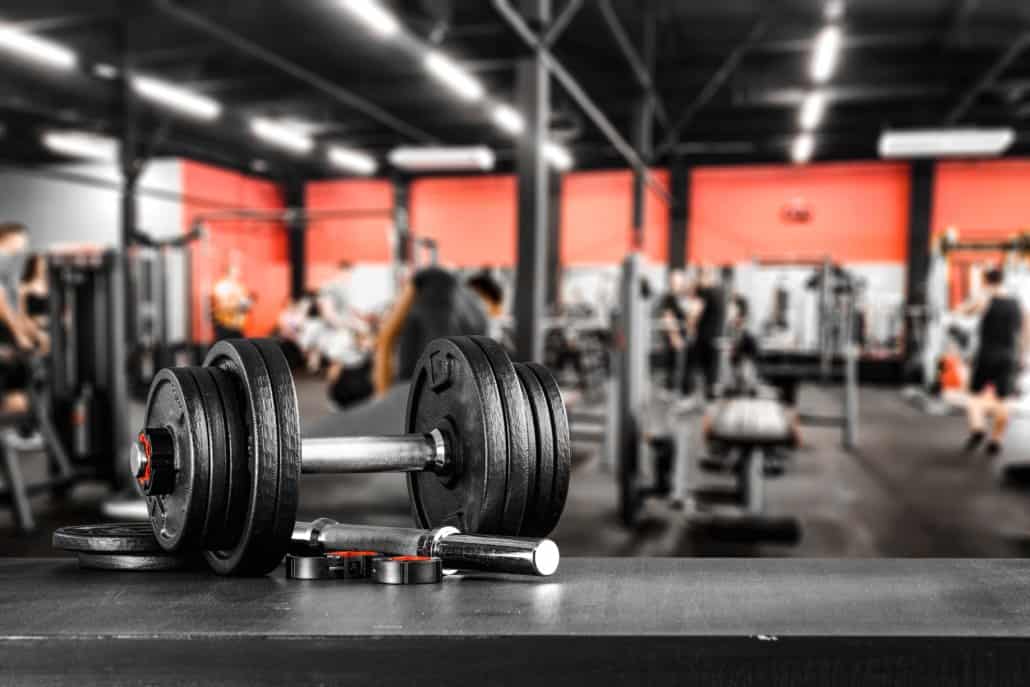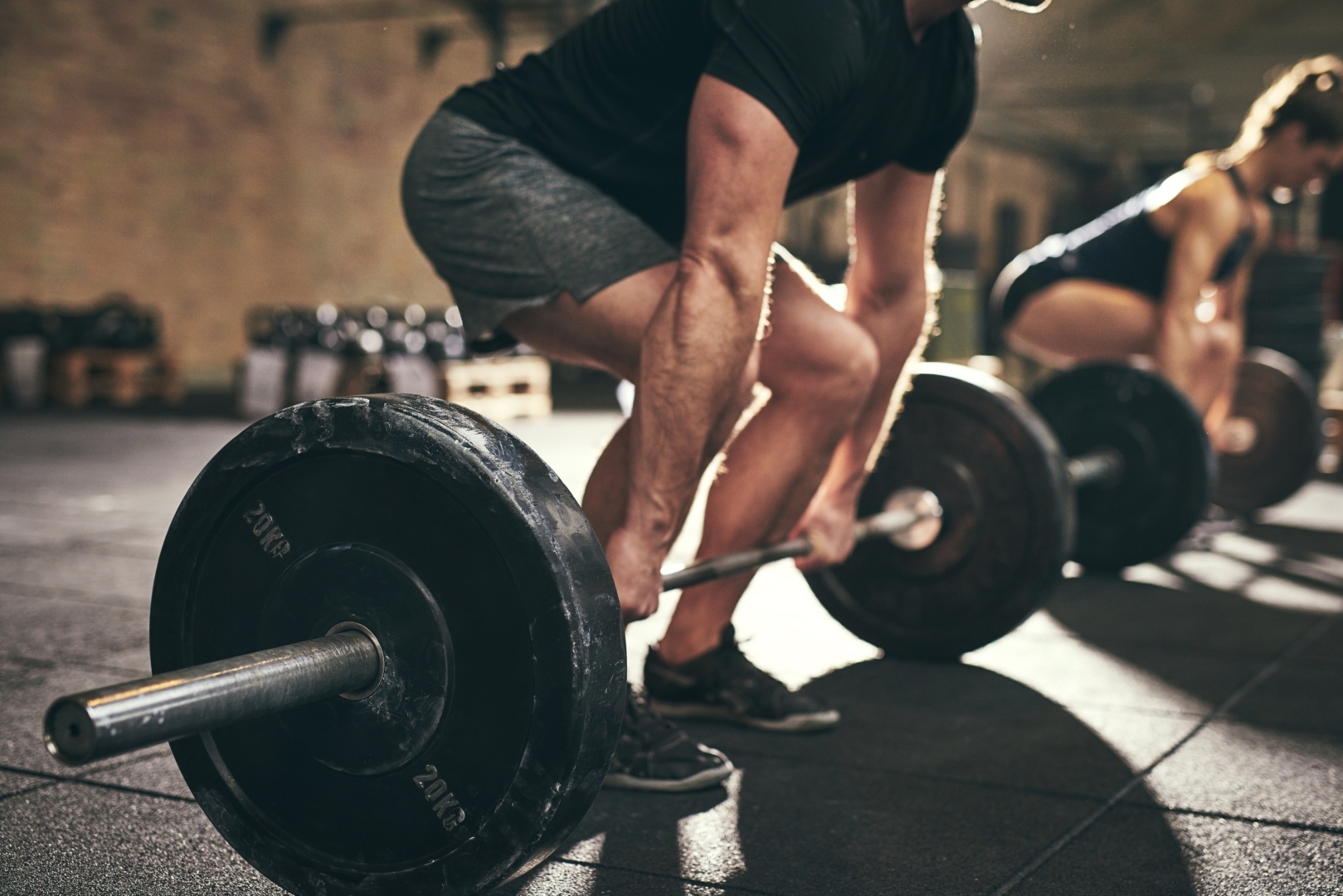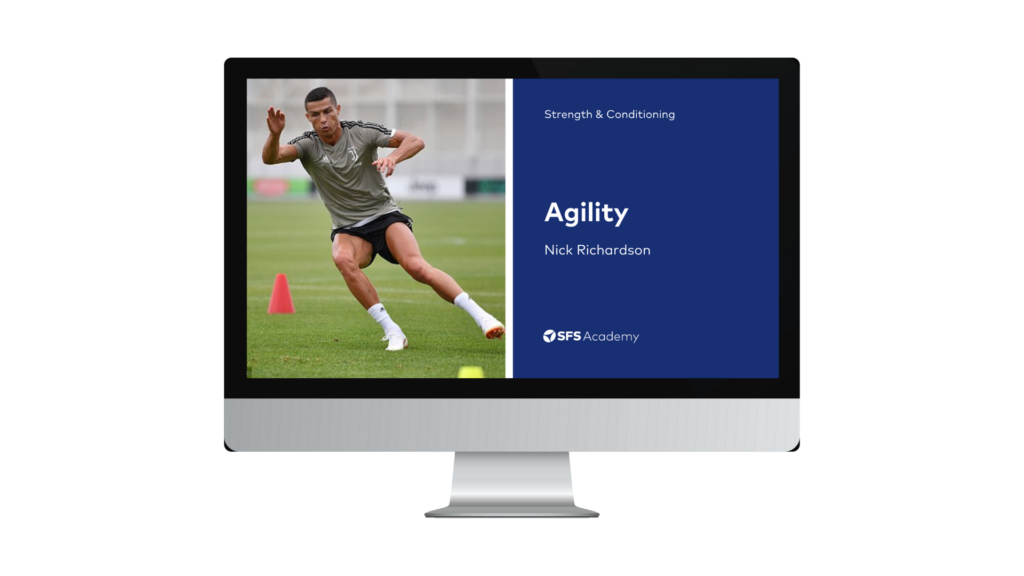- Free weights vs machine: What’s the difference?
- Theory of free weights
- What does the science say about free weights?
- Should you use free weights?
- Take home for using free weights
Free weights vs machines: What’s the difference?
When you were younger, it’s likely you learnt to ride a bike. Perhaps you saw older friends or siblings doing it and it looked like great fun – you wanted in! It also looked a bit scary and difficult. The chance of falling off that thing and leaving the skin from your knees down the road behind you was high.
So, some bright spark thought of a way to give you some confidence in the early days – training wheels! Those little wheels attached to the main back wheel would keep you upright regardless of your balance levels and technical ability. When we got into it, I’m sure many of us probably thought this stabilised level was quite enough and that we’d never need to take those comforting little wheels off. Would it really be much better just on the two big wheels? Upon joining a gym for the first time, you typically have an induction with a member of staff who shows you how all of the kit worked. “Press this button to start and stop the treadmill, this one to make it go faster” etc.
If you are a relative novice, you will have been walked around the weights machines, including the chest press, lat pulldown and leg press. You’ll have been told these machines tick off the main muscle groups and that lifting weights is important for strength, bone health and maintaining day-to-day function as we age. I hope that’s what you’re told anyway! And so you begin – a bit of cardio, a bit of machine weights, great stuff, you’re into a rhythm. However, you can’t help but notice the other area of the gym that wasn’t really explained. You recognise the exercises there use similar movements to the machines, but it all looks a bit trickier. You see dumbbells, barbells, weights plates. You see … the free weights section.
As with so much in exercise and training, there is much myth and legend that you may have heard about this place. “It’s much better than the machines” … “if you don’t know what you’re doing, you’ll hurt yourself” … “you need six months’ experience before even thinking about it!”.
Today we’ll consider if, how, when, and why we should consider removing our gym training wheels.

Theory of free weights
In days gone by, machine weights were the clean, safe, friendly way to pump some iron. Free weights however, were where the gym trolls grunted, sweat, and made outsiders or beginners feel unwelcome! Thankfully, I truly believe these days are behind us. It’s now not uncommon at all to see young and old, men and women, novice and strong in the free weights area without judgement.
Here, I feel it’s worth reminding you of a favourite gym quote of mine – “no one is looking at you, they’re all only looking at them”! So, it’s useful to start by saying not to be intimidated if you want to dabble in the free weights. But what are they supposed to do? Simply put, I think we can encompass the supposed benefits by describing how it feels to use them.
If you’ve ever used a chest press machine, it’s pretty straightforward. You sit, set the handle position, and push outwards until your arms are straight. You then reverse that movement back to the start position.
The famous bench press does pretty much the same thing, although you’re lying flat on your back. The big difference is the feel of the movement. On the machine, it’s almost like the path of the moving component is on rails. It can only move in one plane of motion – out, and back again. This is why many people feel machines are safer, and that they are more confident using them.
On the barbell free weights bench press, again you aim to move the bar out and back again but there’s also movement in every other direction, as it is ‘free’. Move to a dumbbell bench press and this intensifies further as you have two separate objects to control. And control here is the key word – the main claims around the benefits of free weights is they recruit more of the helper muscles. This can both be the smaller muscles around the joints that are moving, but also the core muscles.
It is subsequently argued that real life, or sport, seldom comes at you in a nice straight line, so it’s especially useful to have the additional stabilisation, gained from using free weights. The question, as always, is whether science backs up this idea and if so, is the case strong enough for us to consider adding it into our programs?
What does the science say about free weights?
This question has been around for a long time now. At least as far back as the 1960s, when machine weights in gyms started to become more common. Thankfully, this means there is a reasonable base of scientific research we can dig into in attempting to answer this question.
Firstly, we’ll consider the claim that using free weights might increase certain hormones considered useful for strength and muscle gains. With specific regard to testosterone, a set of participants in a free weight group had a greater increase in testosterone [1] following an acute training session than those in the machine weights group. Interestingly though, despite this increase in testosterone, both groups resulted in similar increases in muscle mass and strength. This suggests that although there are some hormonal advantages to using free weights, this does not necessarily mean you will achieve greater outcomes.
This may be due to other reasons, such as it being easier to isolate specific muscles on machines, which leads to adaptation through a different mechanism. Similar findings were shown when a comparison was made between machine and free weights groups where gains in muscularity, strength, and functional ability were seen regardless of the equipment being used [2]. This particular study was in novice lifters, so may be useful in letting newbies know they don’t need to rush into using free weights until they feel ready, as they’ll still get good results.
It isn’t always level pegging though. A comparison of the leg press and free weight squat suggested that following eight weeks of training, the squat might be a better [3] strength training exercise for the development of jump performance. Being a marker of power often used by scientists, this suggests that in this case, free weights might be more useful to individuals looking to increase their explosive power for certain sports.
On the other hand, sometimes the machines win out. When looking at female lifters, machine squat training was found to provide performance-enhancing benefits of equal or superior value [4] to those obtained with free-weight squat training during the start of a training phase. Here the researchers suggested these findings may be the result of machines enabling individuals to concentrate on force production rather than the technique involved in the free weight squat.
Should you use free weights?
Before we sum up the scientific findings to determine whether you should start to use free weights in your routine, I’d also like to throw in some practical considerations. Changing weight plates and taking collars (the grips that lock the weight onto the end of the bar) on and off can be quite time consuming. Sometimes, if you only have 30 minutes for a session, a quick machine circuit can deliver most of the benefits in a much more convenient fashion.
You may also need a spotter for some free weights exercises – the role of this individual is to help save the day when you’re about to be pinned under a barbell when absolute fatigue sets in. Depending on the session, it can be dangerous to lift without one. In that case, you can get pretty close to matching the desired intensity on a machine.
Additionally, sometimes the isolated nature in which machines work can be beneficial. If you are working on an injury, you may want to target specific muscles to cause adaptation or to rest it while still exercising.
More broadly, the evidence presented makes a pretty good case for both sides of the argument. If you’re not confident in your technique or are a little pushed for time, then it’s good to know there are plenty of benefits to be had from sticking on the machines. If you’re interested in being a bit more of a rounded individual, to benefit your sports and to slow the clock as we age, then the stability gained through free weight training could be of interest.
Take-home for using free weights
As with so many things in training, and indeed science, the answer here is ‘it depends’. The evidence is good for the use of free weights, but the good news is that if you don’t feel comfortable or ready, then you’ll still be getting many great benefits from using machine weights.
To sum up, I think a balanced approach is always a good one. Why not mix both into your program. Just make sure you’ve confident and competent with the technique by making sure you speak to a professional before you kick things off. You never know though – a few sessions with a personal trainer to help get your confidence up and much like moving to two wheels on your bike, you might never look back.
- Schwanbeck, S. R., Cornish, S. M., Barss, T., & Chilibeck, P. D. (2020). Effects of Training With Free Weights Versus Machines on Muscle Mass, Strength, Free Testosterone, and Free Cortisol Levels. Journal of strength and conditioning research, 34(7), 1851–1859. [Link]
- Aerenhouts, D., & D’Hondt, E. (2020). Using Machines or Free Weights for Resistance Training in Novice Males? A Randomized Parallel Trial. International journal of environmental research and public health, 17(21), 7848. [Link]
- Wirth, K., Keiner, M., Hartmann, H., Sander, A., & Mickel, C. (2016). Effect of 8 weeks of free-weight and machine-based strength training on strength and power performance. Journal of human kinetics, 53, 201–210. [Link]
- Schwarz, N. A., Harper, S. P., Waldhelm, A., McKinley-Barnard, S. K., Holden, S. L., & Kovaleski, J. E. (2019). A Comparison of Machine versus Free-Weight Squats for the Enhancement of Lower-Body Power, Speed, and Change-of-Direction Ability during an Initial Training Phase of Recreationally-Active Women. Sports (Basel, Switzerland), 7(10), 215. [Link]




